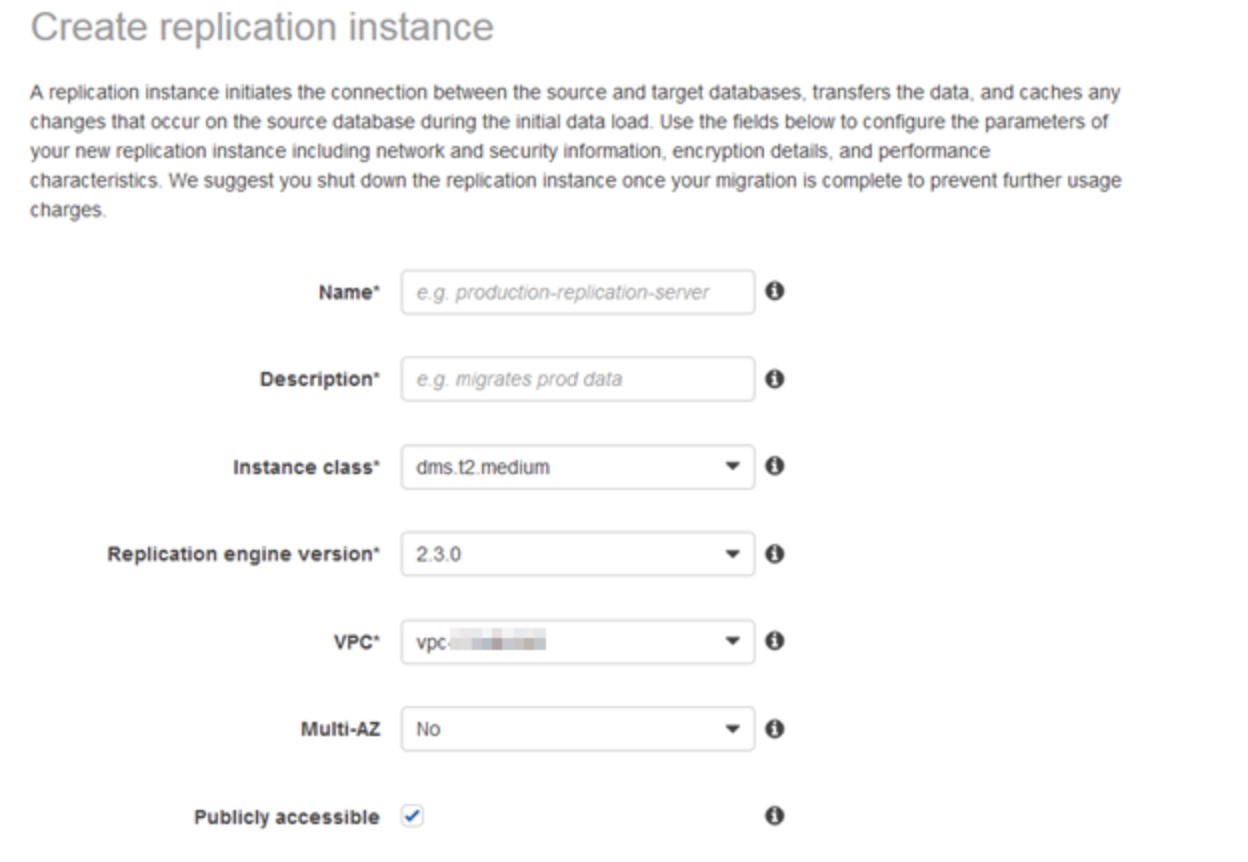Migrating MySQL Database to AWS with Amazon Database Migration Service
Question
A company has maintained a MySQL database on-premises and is considering migrating the database to AWS.
They require the database instance in AWS to keep synchronizing with the on-premises one.
Then after a while, the on-premises database will be decommissioned after the AWS RDS instance has been tested thoroughly by the QA team.
Amazon Database Migration Service has been chosen to implement this migration.
For this data migration task, which below options are necessary that you must perform? Select 3.
Answers
Explanations
Click on the arrows to vote for the correct answer
A. B. C. D. E.Correct Answer - A, D, E.
To use the wizard to begin a database migration, select “Getting started” from the navigation pane on the AWS DMS console.
Following the wizard process, you need to do the following.
Allocate a replication instance that performs all the processes for the migration.
specify a source and a target database.
create a task or set of tasks to define what tables and replication processes you want to use.
AWS DMS then creates your replication instance and performs the tasks on the data being migrated.
Alternatively, you can create each of the components of an AWS DMS database migration by selecting the items from the navigation pane.
Details on how to get started with AWS Database Migration Service can be found in.
https://docs.aws.amazon.com/dms/latest/userguide/CHAP_GettingStarted.htmlOption A is CORRECT: Because the first task in migrating a database is to create a replication instance that has sufficient storage and processing power to perform the tasks you assign and migrate data from your source database to the target database.
Option B is incorrect: For DMS, the replication instance should be created in the DMS console instead of the EC2 instance.
An example is as below.
Option C is incorrect: Because for DMS, The source and target data stores can be on an Amazon Elastic Compute Cloud (Amazon EC2) instance, an Amazon Relational Database Service (Amazon RDS) DB instance, or an on-premises database.
Option D is CORRECT: Because it is a required step to choose the source and target endpoints.
The database engine should be “MySQL”
For example.
Option E is CORRECT: Because the task is needed to specify what tables to migrate, how to map data using a target schema, and how to create new tables on the target database.
In this case, the type of migration should be “migrate existing data and replicate ongoing changes”.

Sure, I can provide a detailed explanation for the necessary steps to perform the migration task using the Amazon Database Migration Service (DMS) to keep synchronizing an on-premises MySQL database instance with an AWS RDS instance.
Here are the three options that must be performed:
A. Allocate a replication instance in the Database Migration Service console that handles the migration processing. Ensure that the instance has a proper instance type with enough CPU and Memory resources to perform the migration task.
The first step is to allocate a replication instance in the Database Migration Service console, which handles the migration processing. The replication instance should have a proper instance type with enough CPU and memory resources to perform the migration task efficiently. The replication instance acts as a buffer between the source and the target databases during the migration process. It also performs the necessary transformations and mappings of the data.
B. Create an EC2 instance that is used as the processing instance for DMS with a proper instance type. Ensure the EC2 instance has a proper role to access RDS MySQL instance. In the Database Migration Service console, configure the EC2 instance as the Replication instance.
The next step is to create an EC2 instance that will be used as the processing instance for DMS. The EC2 instance should have a proper instance type and role to access the RDS MySQL instance. In the Database Migration Service console, the EC2 instance should be configured as the replication instance. This will allow DMS to use the EC2 instance as a processing engine for data replication.
C. Specify a source and a target database endpoint. Use the on-premises database as the source endpoint and an Amazon Relational Database Service (Amazon RDS) DB instance as the target endpoint. Select the database engine for both source and target as “MySQL”.
The final step is to specify a source and a target database endpoint for the migration task. In this case, the on-premises database will be the source endpoint, and the Amazon RDS instance will be the target endpoint. Both the source and target endpoints should be specified as MySQL database engines. This will ensure that the migration task is properly configured for the MySQL database engine.
Additionally, it is recommended to create a task or set of tasks to define what tables and replication processes to be used. For migration type, select “migrate existing data and replicate ongoing changes”. This will allow for the migration of existing data and ongoing changes to be replicated between the on-premises and AWS RDS instances during the migration process.
In summary, to perform the migration task using Amazon DMS to keep synchronizing an on-premises MySQL database instance with an AWS RDS instance, the following three steps are necessary: A) Allocate a replication instance B) Create an EC2 instance as a processing instance for DMS and configure it as the replication instance in the console C) Specify the source and target database endpoints, selecting the MySQL engine for both, and define tasks to migrate existing data and replicate ongoing changes.